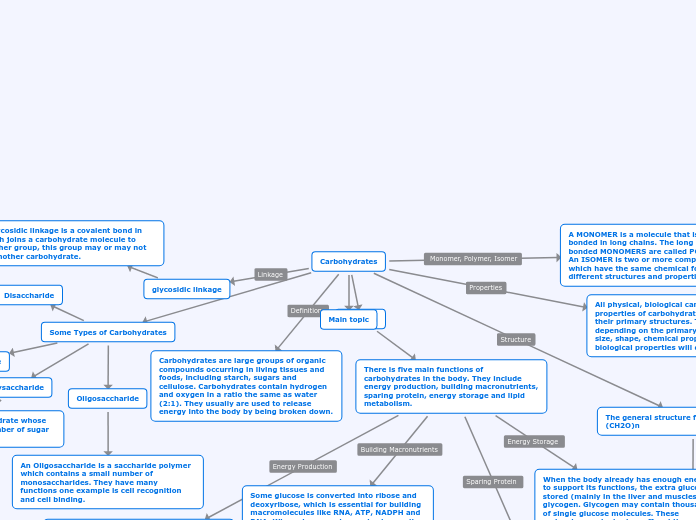
Subtopic
Subtopic
Subtopic
There is five main functions of carbohydrates in the body. They include energy production, building macronutrients, sparing protein, energy storage and lipid metabolism.
Glucose is the main energy production from cells. The cells remove glucose from the blood, the energy that comes from glucose is from the chemical bonds between the carbon atoms. The cells in the body break down the bonds to gain energy which can then be used for cellular respiration.
Some glucose is converted into ribose and deoxyribose, which is essential for building macromolecules like RNA, ATP, NADPH and DNA. When glycogen storage is at capacity and everything that is needed is build, the excess glucose can be used to make fat. If a diet is too high in calories and carbohydrates it will add on fat pounds.
When there is not enough glucose in the body, glucose can be synthesized from amino acids. This happens by a deconstruction of proteins mainly from the muscle tissue in the body.
When the body already has enough energy to support its functions, the extra glucose is stored (mainly in the liver and muscles) as glycogen. Glycogen may contain thousands of single glucose molecules. These molecules can be broken off and then broken down into energy when needed.
A glycosidic linkage is a covalent bond in which joins a carbohydrate molecule to another group, this group may or may not be another carbohydrate.
Oligosaccharide
An Oligosaccharide is a saccharide polymer which contains a small number of monosaccharides. They have many functions one example is cell recognition and cell binding.
Polysaccharide
A polysaccharide is a carbohydrate whose molecules contain a large number of sugar molecules bonded together.
Monosaccharide
Monosaccharides are also called simple sugars, they are the most basic units of carbohydrates and the simplest for of sugars. Monosaccharides cannot be hydrolyzed into simpler chemical compounds.
Disaccharide
A disaccharide is a sugar formed when two monosaccharides are bonded by glycosidic linkages. Disaccharides are soluble in water. Some examples of disaccharides are lactose, sucrose and maltose.